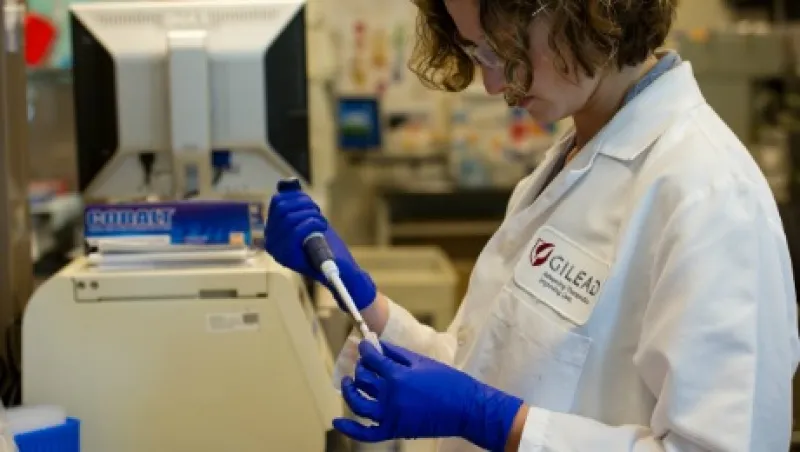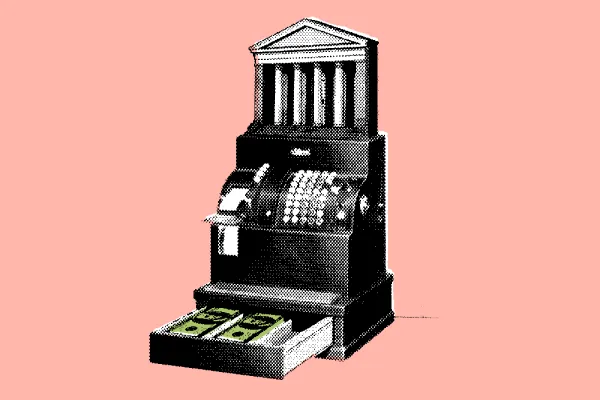It was 1986. I was a junior high school student in Soviet Russia. In political information (propaganda) class, the teacher told us that the HIV virus was killing millions of people in the U.S. Though she didn’t say it explicitly, she made it sound like HIV was a just punishment for the U.S.’s flawed economic and political system. When asked if this virus could be cured, she said that because it constantly mutated it was incurable. (And in fact, HIV reproduces 12 million times daily.) Once you get sick, it’s a death sentence, she told us. I still remember the chilling and morbid certainty in her voice.
For a very long time, she was right.
Fast-forward to 2016. Thanks to the once-a-day miracle drugs Truvada and Atripla from Gilead Sciences, a biotech company in Northern California, AIDS is not a death sentence anymore. Today, people infected with the HIV virus can expect to live an almost normal lifespan. Their lifestyle and energy level will not be different from a healthy person’s. If they continue to follow the regimen, they will not spread the virus. Gilead’s drugs completely eradicate the virus from the bloodstream (though it still hides in bone marrow and lymph nodes). This treatment has very few side effects; its recently introduced cousin Genvoya extends Gilead’s patents until 2029 and has even fewer side effects.
But Gilead’s miracles did not stop with treating HIV. In 2011 the company did the unthinkable — it paid $11 billion for Pharmasset, a Princeton, New Jersey–based 80-employee company that had no sales and only one drug in phase 2 trials. Maybe it was luck, maybe it was skill or maybe it was both, but this acquisition paid off. The drug, Sovaldi, and its successor, Harvoni, were approved, and today they do the incredible: They cure hepatitis C, a virus that attacks the liver.
It is easy, exciting and uplifting to talk about how Gilead has saved millions of lives. But I have to admit I found myself to be slightly conflicted as a capitalist investor and human being when it came to analyzing the company.
Financial analysis forces you to appreciate business qualities such as recurrence of revenue and market growth. For instance, Sovaldi and Harvoni are very effective oral treatments — you are done taking them after 12 to 24 weeks. From a business perspective the hep C market is relatively small: 3 million people in the U.S., 2.6 million in Western Europe, 1.6 million in Japan and as many as 200 million in the rest of the world. In the developed countries hep C is not growing. That’s good, right? As a human being — a father, husband and son — I want to say hallelujah. But to an analyst hep C treatment doesn’t look like a great business, because with every cured soul, potential revenue and the market shrink by exactly one customer.
HIV, on the other hand, is a dream of a business — the market is growing about 5 percent a year in developed countries (HIV is more easily transmitted than hep C); and once patients start taking HIV medicine, they’ll be taking it for the rest of their life. It feels almost like a software-as-a-service (SaaS) business: stable, with growing and highly recurring revenue. I feel slightly disgusted with myself as I write this. It’s very easy when you do this analysis to look at people as revenue streams, but unfortunately, as analysts that is what we have to do.
It gets worse. This analysis forces us to put a price tag on human life; and the price tag will be different depending on if you live in the U.S., Western Europe, China or Pakistan. Harvoni is an expensive drug — a treatment course in the U.S. runs $50,000, in Western Europe $30,000, and in Pakistan and other so-called mid-income countries the cure runs $3,000 to $7,000. Poor countries in Africa receive it almost free (similar to AIDS medicine).
How does Gilead come up with these prices? The cost to develop and manufacture an HIV drug is not materially different from that for a hep C drug. The HIV and hep C markets are both relatively small, especially compared with the heart disease or impotence markets. Therefore the price per patient has to be large enough to entice companies to develop drugs for these limited markets. The cost of alternative treatments is another way to analyze the fairness or appropriateness of drug pricing. Many people infected with hep C will at some point suffer liver failure from cirrhosis or cancer; they will require hospitalization and face a painful, miserable death without dialysis or a transplant — all of which could add up to $2 million. Gilead’s Harvoni cures hep C in 95 percent of patients. From that perspective, $50,000 is a steal.
Gilead’s acquisition of Pharmasset will go into the corporate annals as one of the best deals ever — in 2015, Harvoni and Sovaldi generated close to $20 billion in sales.
A certain Democratic socialist presidential candidate would say that this is an obscene amount of money, the bulk of which will go to investors, not to research. He’d be right — Gilead spends about $3.2 billion on R&D a year. Its drugs have gross margins of 90 percent, and the company is insanely (Donald Trump would say “huuugely”) profitable.
And this is where the capitalist in me comes out. Drug discovery is not unlike playing a lottery where billions of dollars are poured into the black hole known as R&D, with very few drugs emerging into the light of day (and profitability). The government stepping in to decide that a company is making too much money might feel good for a year or maybe two — until we need new medicines and discover that biotech and pharma companies are buying fewer lottery tickets (that is, cutting their R&D) because the winning pot was arbitrarily reduced by a well-meaning Democratic socialist.
I was going to title this article “Buy Hep C and Get HIV for Free,” but a smart friend told me that might not be such a great idea. He’s probably right, but essentially, at current depressed valuations — Gilead trades at seven times 2016 earnings — that is how the numbers work out.
If Gilead’s hep C drugs treat 70 percent of patients in developed markets and 5 to 20 percent in developing markets, they will generate more than $140 billion in aftertax profits over the next decade: over $100 a share aftertax (today’s share price is less than $90). I am not assuming 100 percent market share for two reasons: Not everyone will be treated (some people infected are yet to be diagnosed), and there are competitive products on the market from AbbVie and Merck. However, these products, though cheaper, have significant side effects. Unless patients are paying for the medicine out of pocket (a very rare occurrence), their doctors don’t care about drug costs and will prescribe the best one available (with fewer side effects), which happens to be Harvoni. Gilead’s hep C patents extend to the end of the next decade — and hep C in developed markets will be cured well before then.
The rest of Gilead’s business (about a third) comes from HIV and other drugs. On a standalone basis, without its hep C medicines, these drugs would generate about $3 to $3.50 of earnings per share after all corporate expenses (including R&D), equating to roughly $45 to $50 of value. Gilead has a net cash balance sheet, and it is using its enormous cash flows to buy back stock and pay a dividend.
In 1986, when I was a 13-year-old kid, life was simpler. The world was black-and-white (socialism was good; capitalism was bad). As an adult I began to see and appreciate the complexity of the world. A lot of economic phenomena come in multiple shades of gray, and because of capitalism and risk-taking companies like Gilead, the world is a safer and less scary place.






